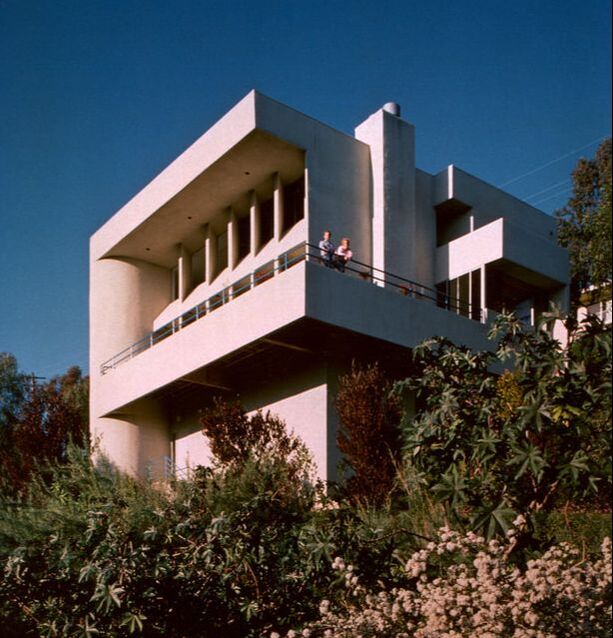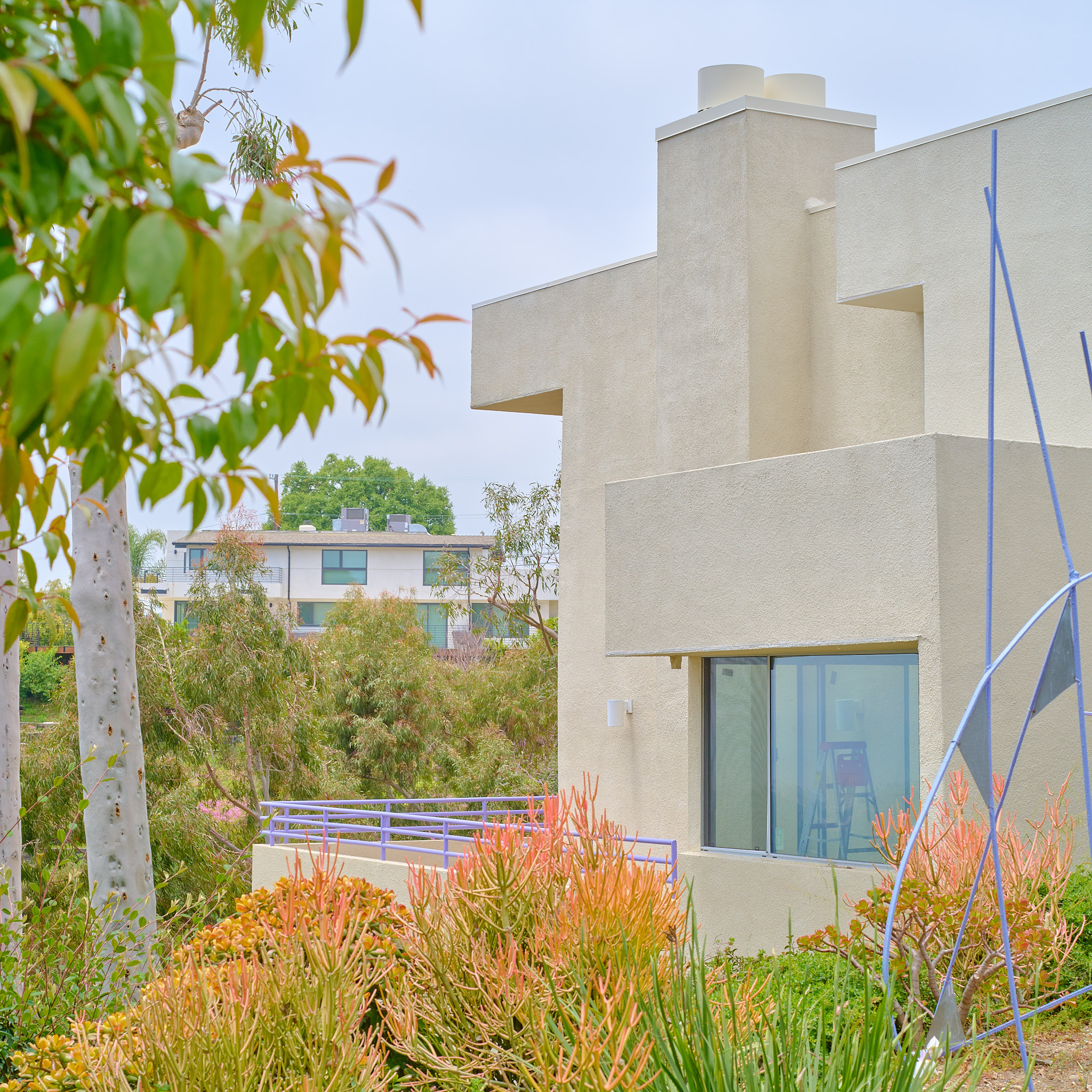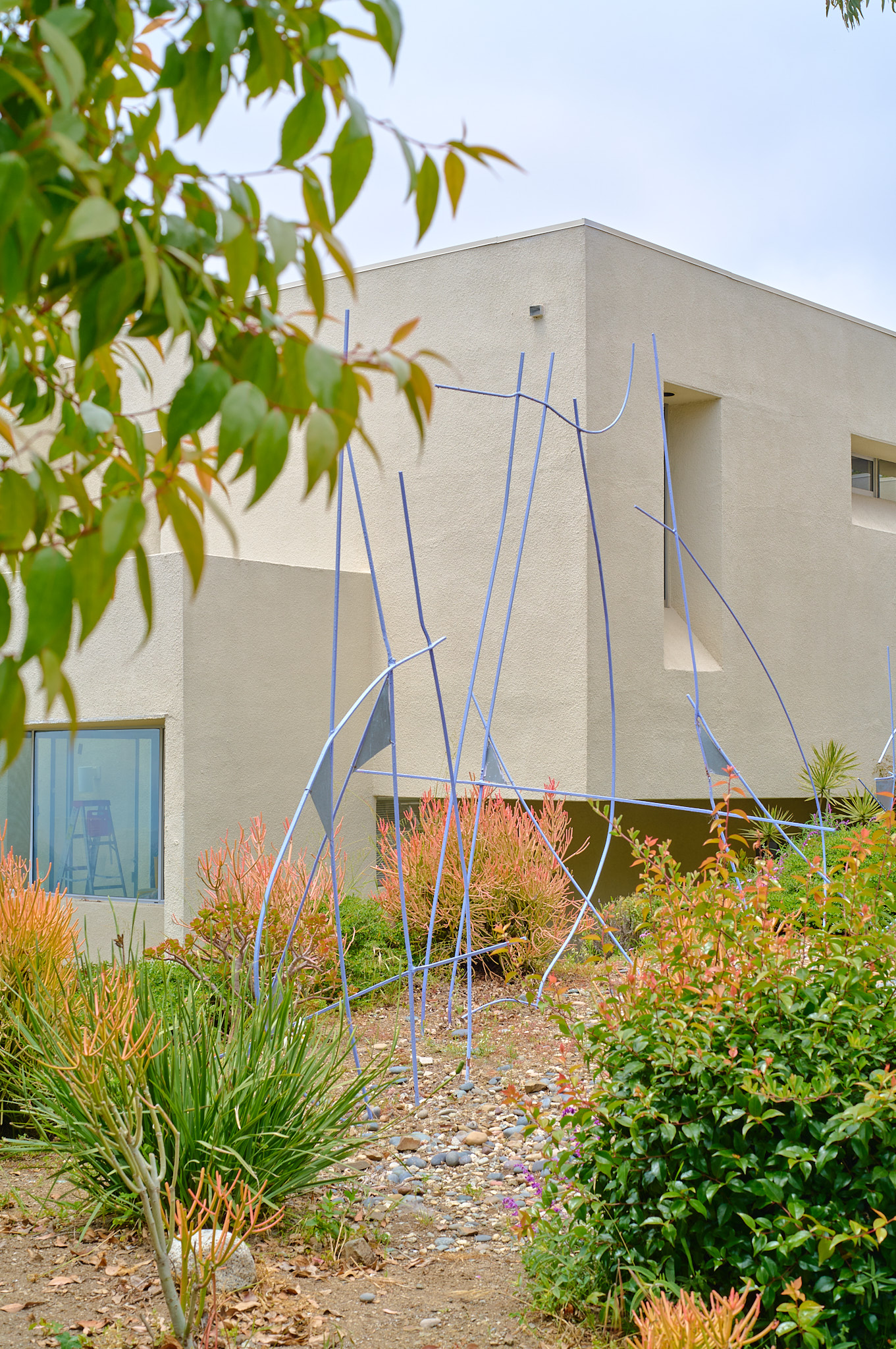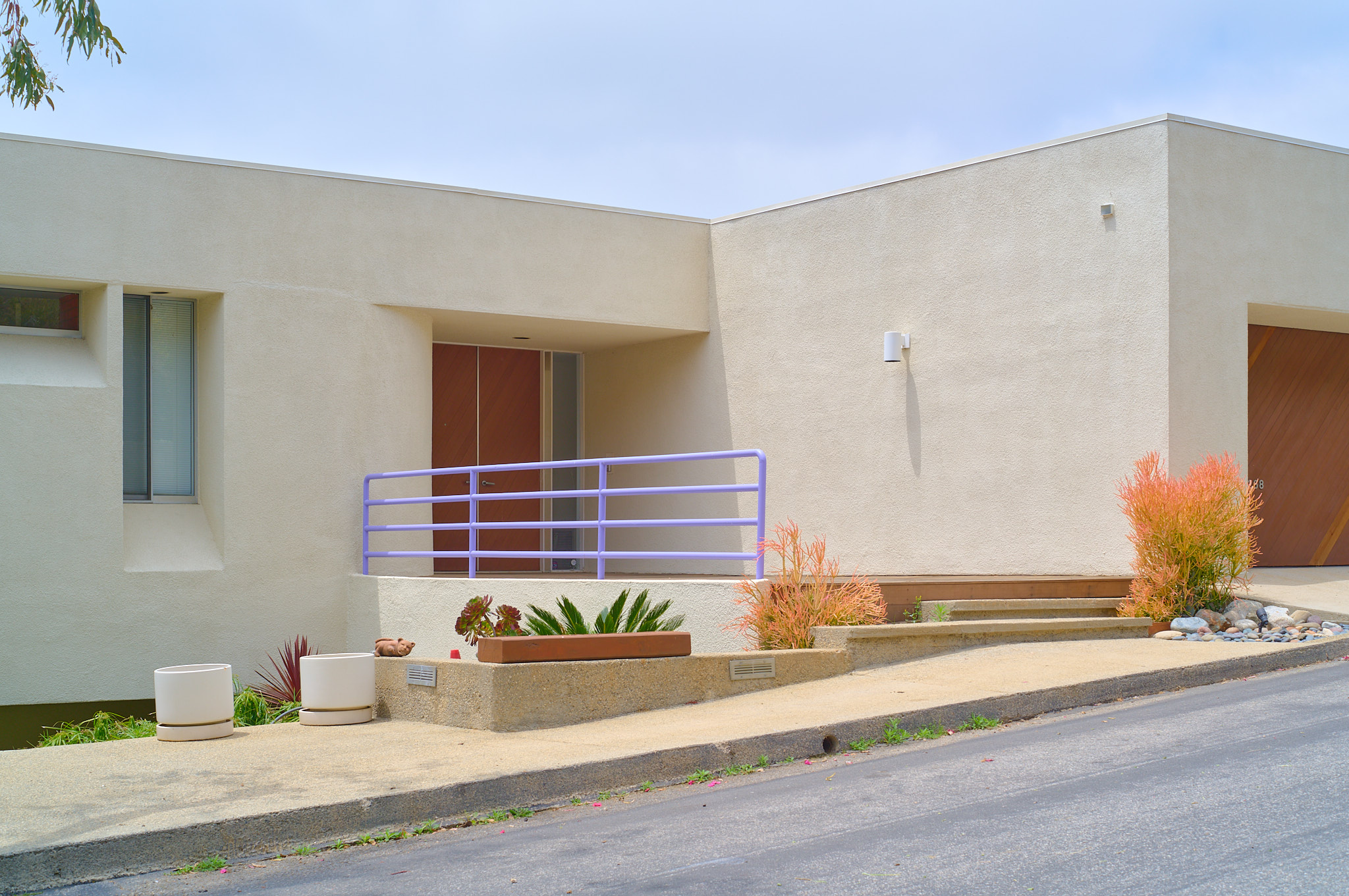The Gelber House
Martin Gelber • 1978 • Brentwood, California
Sigma fp L • Nikon Nikkor 50mm f/1.8
351 words • 6 images

While I was up in Crestwood Hills to visit the Smith House, I drove around a little on some of the winding nearby streets, with the aim of ending up at a Ray Kappe design at 12256 Canna Rd. That house turned out to be very difficult to see from the street, but a purple railing in front of the next-door neighbor’s house immediately caught my eye. I took a few photos of what I could see of that house, marveling at both its simplicity and its playfulness: a barely-visible cylinder at the front door, subtle wire sculptures lining the road.
I was thinking it had to be something from the 1970s, with its small-window-post-energy-crisis-fortress-like street-facing facade, and when I got home I was happy to find out it was a 1978 design: the Gelber Residence by Martin B. Gelber, a Los Angeles-born, USC-trained architect who passed away in 2019 at the age of 82. He lived in this self-designed home for 40 years with his wife, Michela Gunn, who appears to still own it.
I get the sense that late 70s modernism is fairly un-loved, but when I arrived the May grey had just lifted and the sun was casting soft midday shadows across the plain stucco exterior. Stumbling on this house was a real treat.
•••

That obituary linked above is a great place to learn about Gelber, as is this site dedicated to his work.
I had never heard his name before, but after seeing this house in person, I definitely won’t forget it.


Gelber also designed a home for himself and his wife upstate at Sea Ranch; there his design closely followed another design by William Turnbull, Jr. one of the original architects of Sea Ranch. Recently the home was featured in AD. Perhaps that love of Sea Ranch style inspired the diagonal wood planks on the garage door here.

I’d love to know more about these sculptures that run the full length of the frontage. Really lovely, ethereal sculptures. Perhaps they were Gelber’s own design?

A little more about Gelber in this 1984 issue of LA Architect.